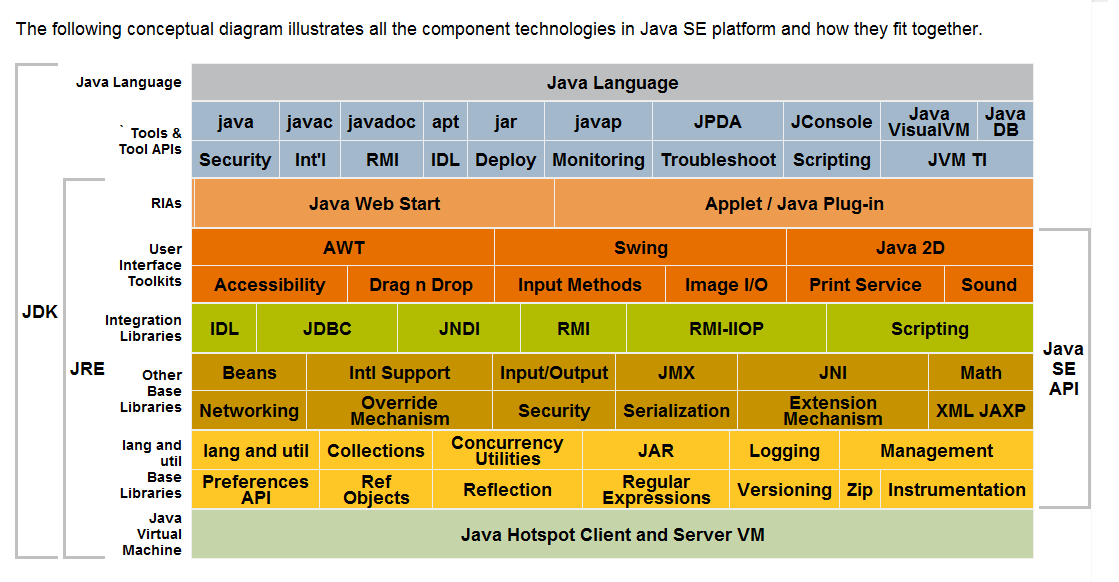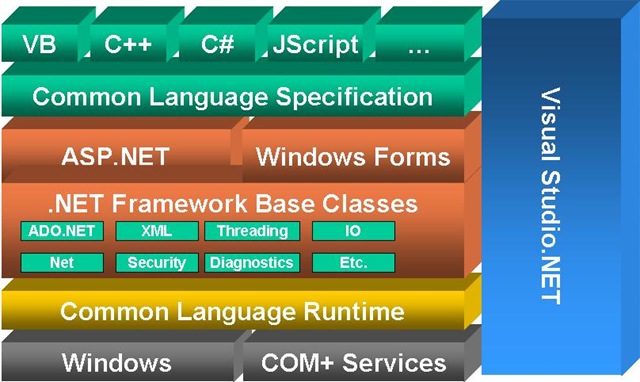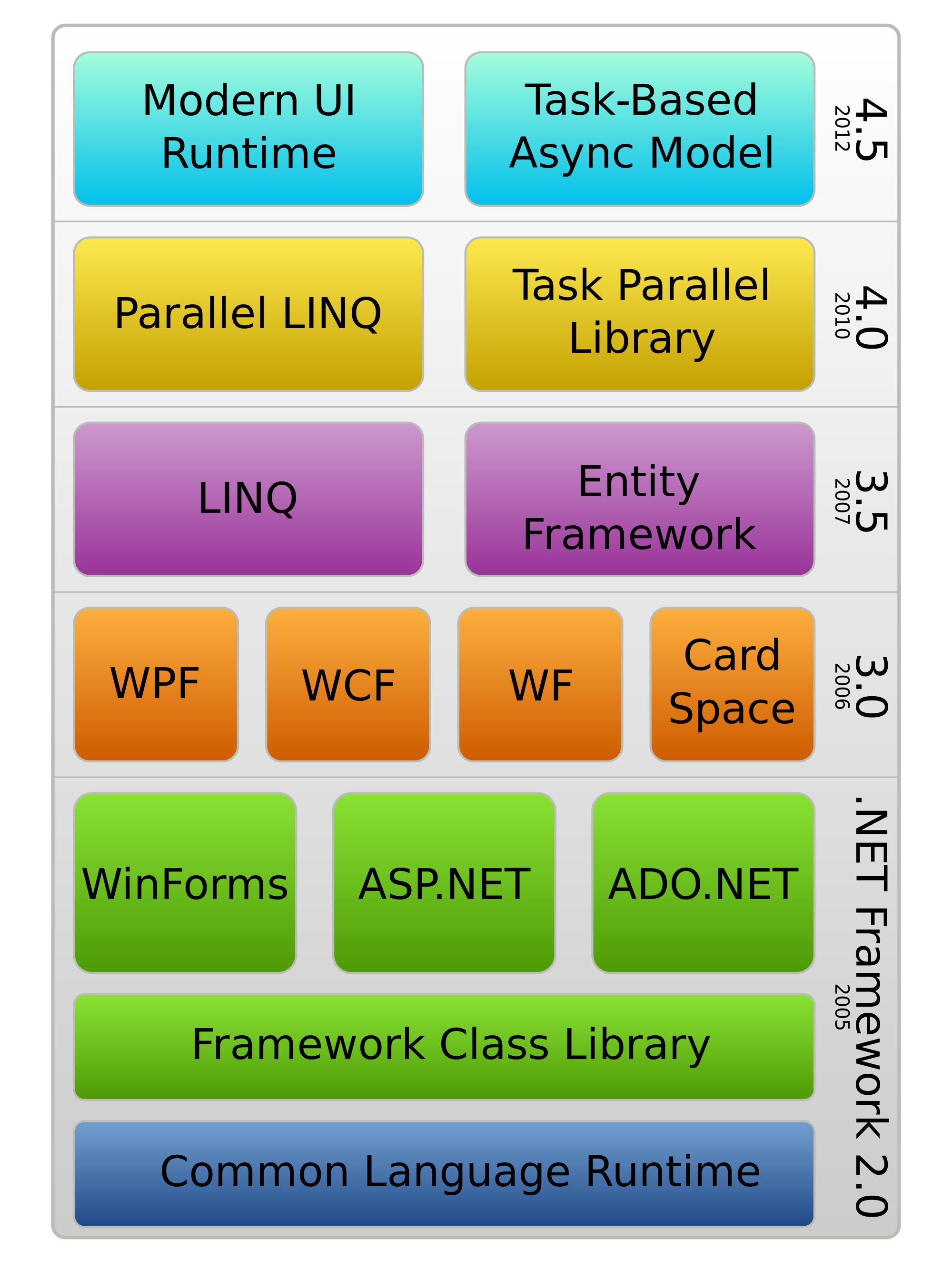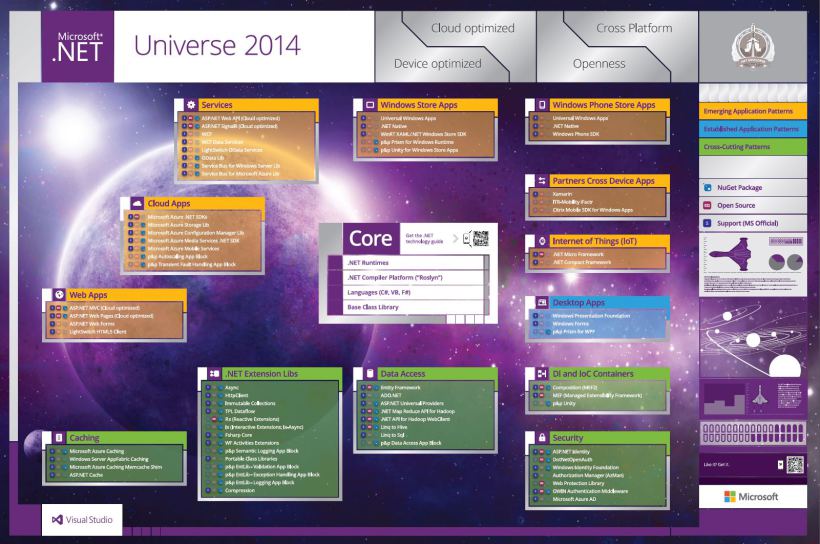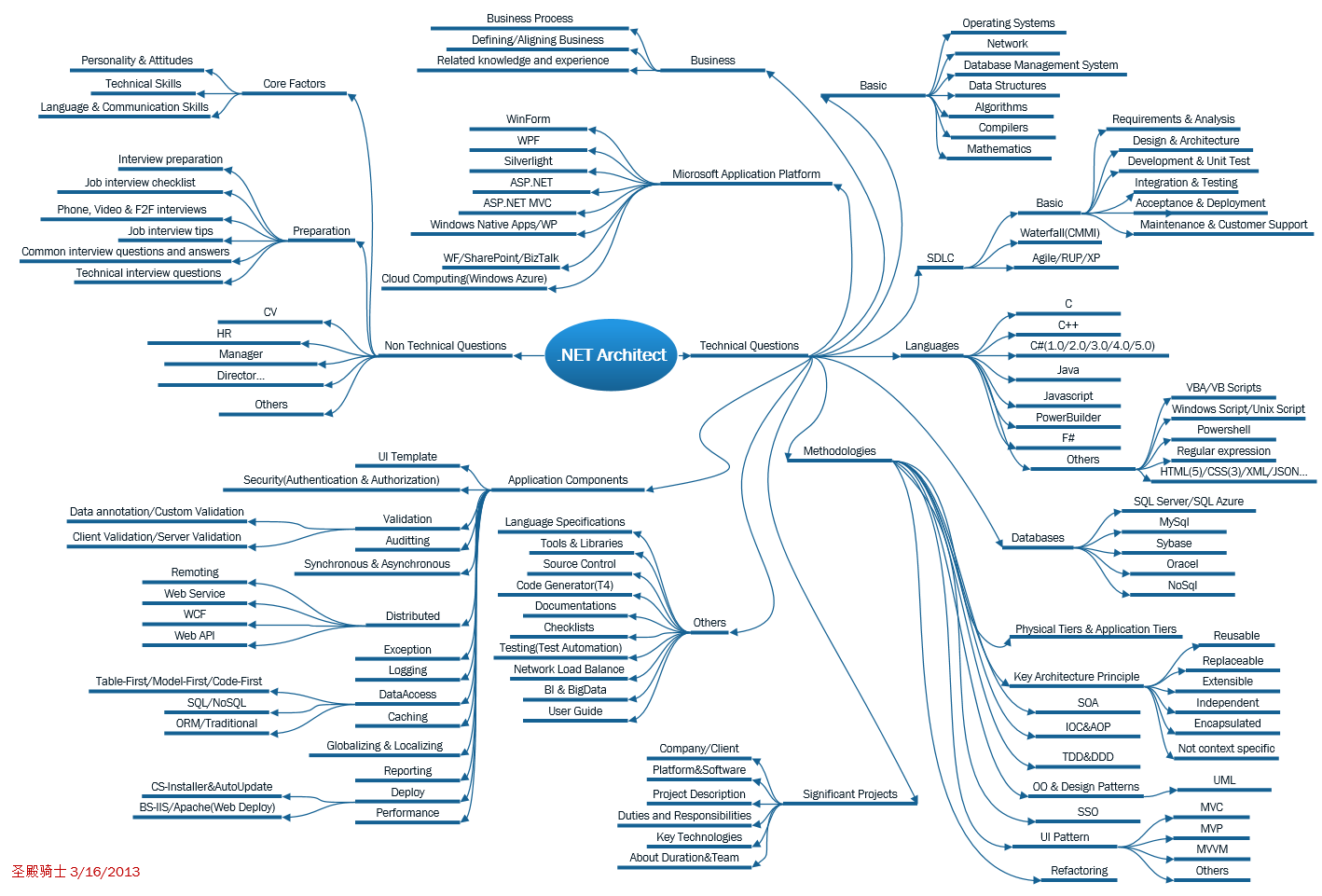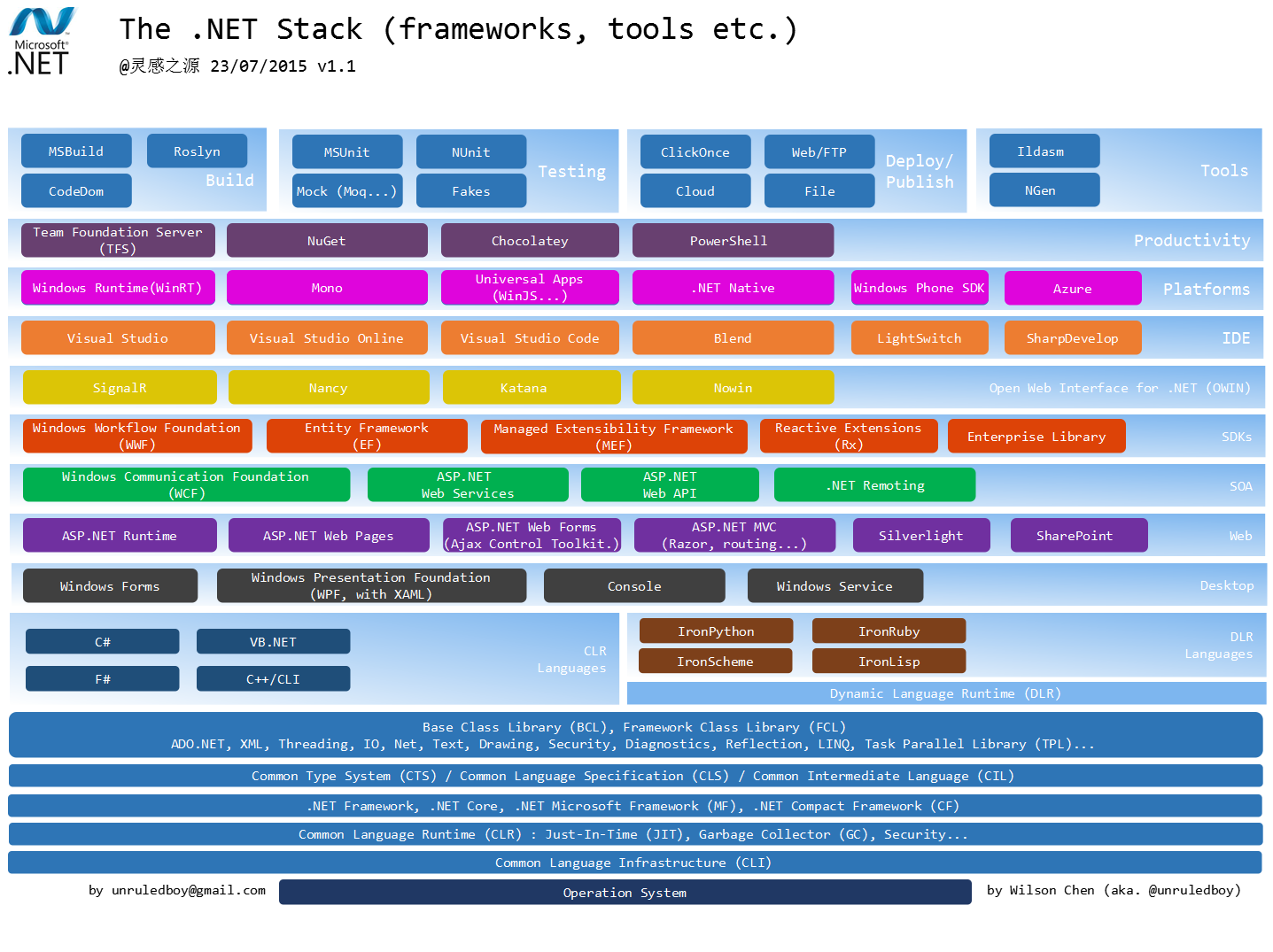Preface
It has been 13 years since .NET was launched, and Visual Studio 2015 / .NET Framework 4.6 was also released yesterday.
Starting from .NET 1.0 in 2002, 1.1, 2.x, 3.x, 4.x, each new version of .NET will add new technologies, and the ecosystem will continue to grow.
Question
Have you ever thought about: What technologies does
- ##.NET contain?
- What proportion of the subset of technologies I master occupy in the superset of .NET technology?
- How much .NET technology have I not mastered yet?
- What skills will be tested during the interview?
I believe you have also seen the Java technology stack, a pyramid-shaped one (I couldn’t find it at once, if you know it, please tell me), including a variety of technologies:

View large image
Over the years, I have seen many .Net architecture diagrams/technology stacks, and after searching for a long time, I have not found one that meets my requirements. A diagram that describes the .Net technology system more comprehensively. I believe there is a more comprehensive one within Microsoft, but unfortunately I didn't find it.
On the Internet, there are a few simple new classifications based on versions, etc., such as this one:

View large image
Or this new technology based on the .NET version:

View larger image
Including Microsoft’s own .net universe 2014. No:

View large image
Templar published a technical summary chart required for .NET architect interview in Singapore Architect Interview Summary :

View large image
However, this summary diagram is oriented to the technologies that .NET architects need to master, which is different from what I need.
.NET Technology Stack
I recently looked for a job and interviewed many companies. Different companies have different technical requirements. I combined these technologies with the technologies I have mastered and summarized them. Net related technologies, there are about 50 technical points in 10 major categories. It took me a while to get an overview of the .NET technology stack.
The classification in this chart may not be accurate, and there will inevitably be omissions in related technologies. We welcome your suggestions for continuous improvement.
Due to space limitations, some technologies are not listed here, for example:
- Database access such as NoSQL, O/RM such as NHibernate
- Dependency Injection such as Autofac
The following is a preview of the first draft:

View larger image
That’s it. NET technology overview (the most comprehensive .NET technology stack to date). For more related content, please pay attention to the PHP Chinese website (www.php.cn)!

